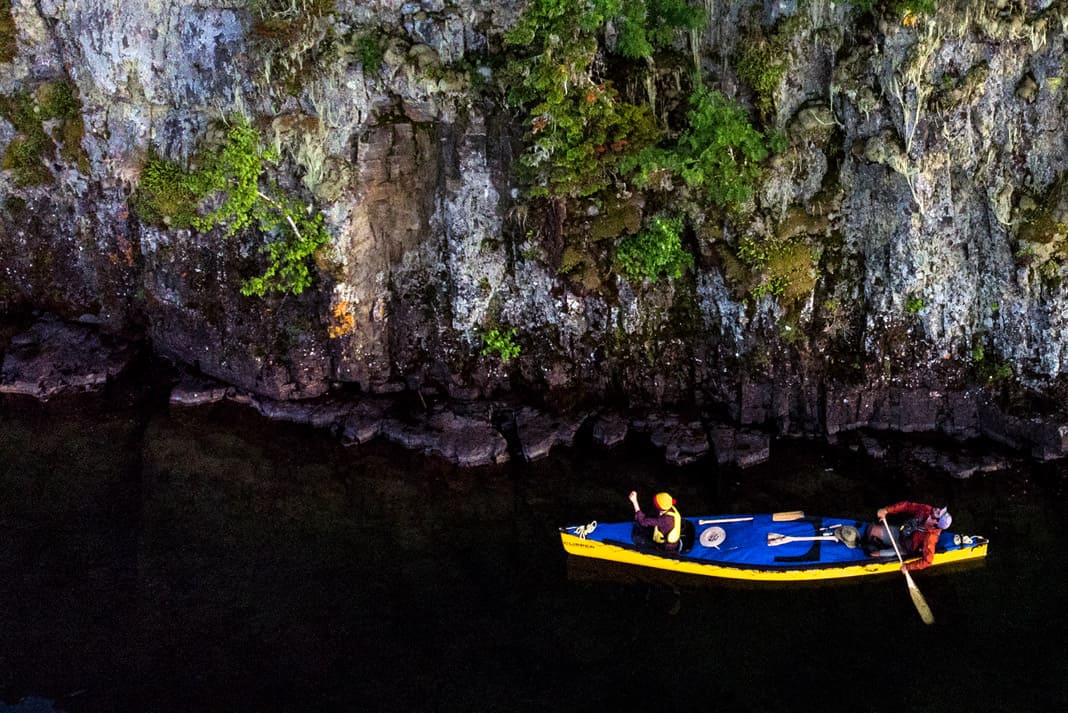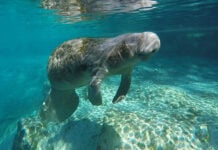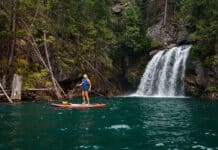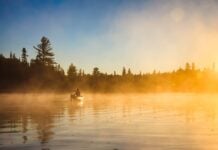As canoeists lust after Canada’s furthest latitudes they often bypass canoeing Lake Superior, one of the finest wilderness lakes on our planet. Lake Superior is North America’s largest freshwater lake and represents one of the greatest untainted wonders of our natural world.
Beauty glides by while canoeing Lake Superior
Travelling by canoe along Canada’s north shore of the big lake, traditionally known to the Ojibwe as Gichigami (Gich-ii-goo-me), offers nearly 1,000 kilometers of portage-free paddling.
From ragged cliffs to island chains where the water appears a tropical azure, this section of Lake Superior reads like a paddler’s love story.
Sea caves and steep headlands are punctuated by intermittent roadside access. From Wawa to Pic River stretches the most romanticized, roadless length of shoreline.
Bill Mason spent many nights exploring Denison Falls in Nimoosh Provincial Park, just east of the pristine, battered beauty of Pukaskwa National Park. The myriad of coves, ancient pits and crystal-clear water seem too surreal to exist naturally.
The stretch from Pic River through to Rossport is highlighted not only by the beaches of Neys Provincial Park, but also the shifting geography of the Lake Superior Marine Conservation Area.
From Rossport all the way to the toes of the Sleeping Giant, one might drop a line for dinner, visit a secret sauna and forget they are on Lake Superior as the immediate shoreline becomes a maze of mossy islands and narrow channels.

Exposure
From any direction, wind and waves can be deadly. Watch your shoreline and consider the forecast. Plan to be windbound one day for every three to four on the water.
Weather
While mid-summer heat might be forecasted, a wind from the ice water mansion will chill you to the bone. Dress in layers. The water averages just 4°C.
When to go
Superior’s relative mid-summer slumber of good weather typically stretches between mid-June to early August.
Essentials
A marine radio is a must to receive wind and wave forecasts. A spraydeck provides peace of mind and additional safety if you are caught out in rougher weather.
Exit strategies
Consider access roads and towns should you get windbound and have to limit travel. There may be limited options to evacuate.
What to explore when canoeing Lake Superior
Be it Group of Seven paintings or red ochre pictographs, Edmund Fitzgerald historians or fur trade dreamers, canoeing Lake Superior still brings to mind echoes of creaking bark boats and the tales of generations gone.
If you have a day:
Head to Sinclair Cove and explore the small bay and surrounding islands. If conditions are calm, venture east around the point and visit the Agawa Pictographs. Get a sense of Lake Superior’s enormity without venturing far from safety. If conditions are poor, hike above the cove to a beautiful lookout.
If you have a weekend:
Launching at Silver Islet, paddle west towards Thunder Bay and Sleeping Giant Provincial Park. Reserve a campsite at either Tee Harbour or the scenic Lehtinen’s Bay and hike up the Giant for a spectacular view of Superior. If the weather turns foul and time is precious, hike back to your vehicle on the trails.
If you have a week:
Canoeing Lake Superior from Agawa Bay to Old Woman Bay is an unforgettable trip with varied shorelines to experience a multitude of Lake Superior’s wonder. Sprawling beaches, sea caves, and sections of intimidating cliffs offer a true feel of the lake. In poor wind conditions, Gargantua is an optional exit point.
If you have a month:
For the hearty tripper, Montreal River Harbour to Silver Islet is a classic trip. It encompasses all the elements of extensive route planning, wilderness travel, weather considerations, open water crossings, and passes through all the most beautiful points of Lake Superior. The highlight of this east to west trip are the saunas in the Lake Superior Marine Conservation Area.
This article was first published in Issue 57 of Paddling Magazine. Subscribe to Paddling Magazine’s print and digital editions, or browse the archives.







